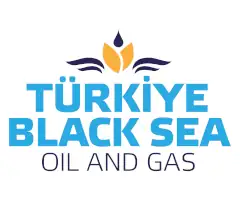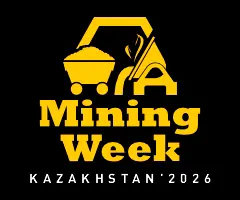Methodology of geodynamic zoning based on factor analysis of spatial data
 E.A. Tagaev1, Ya.S. Glatko1, S.A. Glatko1, A.M. Kuleshov2 , I.O. Panichkin1
E.A. Tagaev1, Ya.S. Glatko1, S.A. Glatko1, A.M. Kuleshov2 , I.O. Panichkin1
1 National University of Science and Technology MISIS, Moscow, Russian Federation
2 Bryansk State Technological University of Engineering, Bryansk, Russian Federation
Russian Mining Industry №1 / 2025 p. 97-101
Abstract: The article considers a geodynamic zoning methodology based on the factor analysis of spatial data. This algorithm includes several key principles: identification of geodynamic factors, data collection and processing, statistical analysis, territory classification and forecasting. Based on application of modern methods of data analysis, including the use of neural networks, this methodology allows us to determine the importance of each geodynamic factor. The article discusses the problem of selecting and evaluating the efficiency of factor selection in geodynamic zoning of territories. A special attention is paid to identification of informative signs and overcoming the problem of retraining. An algorithm for analyzing the frequency of repetition is presented to assess the distribution uniformity of the generalizing function Фkn (F) values. The importance of this method is emphasized for ensuring the safety of mining operations in hazardous fields and managing geodynamic risks. Identification of such zones makes it possible to efficiently concentrate efforts and resources on preventing accidents and minimizing risks, thus safeguarding the worker and reducing the chances of unexpected emergencies in the course of field operations.
Keywords: geodynamic zoning, factor analysis, spatial data, potentially hazardous zones, mining safety, mine operation
For citation: Tagaev E.A., Glatko Ya.S., Glatko S.A., Kuleshov A.M., Panichkin I.O. Methodology of geodynamic zoning based on factor analysis of spatial data. Russian Mining Industry. 2025;(1):97–101. (In Russ.) https://doi.org/10.30686/1609-9192-2025-1-97-101
Article info
Received: 29.10.2024
Revised: 09.01.2025
Accepted: 10.01.2025
Information about the authors
Egor A. Tagaev – Postgraduate Student of the Department of Geology and Surveying at the Mining Institute, National University of Science and Technology MISIS, Moscow, Russian Federation; e-mail: This email address is being protected from spambots. You need JavaScript enabled to view it.
Yaroslav S. Glatko – Postgraduate Student of the Department of Geology and Surveying at the Mining Institute, National University of Science and Technology MISIS, Moscow, Russian Federation, e-mail: This email address is being protected from spambots. You need JavaScript enabled to view it.
Svetlana A. Glatko – Postgraduate Student of the Department of Geology and Surveying at the Mining Institute, National University of Science and Technology MISIS, Moscow, Russian Federation, e-mail: This email address is being protected from spambots. You need JavaScript enabled to view it.
Andrey M. Kuleshov – Student of the Department of Production of Building Structures, Construction Institute, Bryansk State Technological University of Engineering, Bryansk, Russian Federation; e-mail: This email address is being protected from spambots. You need JavaScript enabled to view it.
Ilya O. Panichkin – Postgraduate Student of the Department of Geology and Surveying at the Mining Institute, National University of Science and Technology MISIS, Moscow, Russian Federation, e-mail: This email address is being protected from spambots. You need JavaScript enabled to view it.
References
1. Бондарик Г.К., Ярг Л.А. Инженерно-геологические изыскания. 3-е изд. М.: Книжный дом «Университет»; 2014. 418 с.
2. Акматов Д.Ж., Евлоев Х.Ю., Меллер А.Д., Манукян Т.А., Чадин В.Н. Методика численного моделирования полей напряжений в районе размещения угольных шахт. Горная промышленность. 2023;(1):39–44. https://doi.org/10.30686/1609-9192-2023-1-39-44
Akmatov D.Zh., Evloev H.Y., Meller A.D., Manukyan T.A., Chadin V.N. Methodology for numerical modeling of stress fields in vicinities of coal mines. Russian Mining Industry. 2023;(1):39–44. (In Russ.) https://doi.org/10.30686/1609-9192-2023-1-39-44
3. Manevich A.I., Kolikov K.S., Egorova E.A., Geoecological aspects of stress-strain state modeling results of Leninsky coal deposit (Kuzbass, Russia). Russian Journal of Earth Science. 2019;19:ES4002. https://doi.org/10.2205/2019ES000663
4. Morozov V.N., Tatarinov V.N., Manevich A.I., Losev I.V. Analogy method to determine the stress-strain state of structuraltectonic blocks of the Earth’s crust for the disposal of radioactive waste. Russian Journal of Earth Science. 2019;19:ES6001. https://doi.org/10.2205/2019ES000687
5. Гвишиани А.Д., Агаян С.М., Лосев И.В., Татаринов В.Н. Методика оценки геодинамической опасности структурного блока, вмещающего объект подземной изоляции РАО. Горный информационно-аналитический бюллетень. 2021;(12):5–18. https://doi.org/10.25018/0236_1493_2021_12_0_5 Gvishiani A.D., Agayan S.M., Losev I.V., Tatarinov V.N. Geodynamic hazard assessment of a structural block holding an underground radioactive waste disposal facility. Mining Informational and Analytical Bulletin. 2021;(12):5–18. (In Russ.) https://doi.org/10.25018/0236_1493_2021_12_0_5
6. Татаринов В.Н., Маневич А.И., Лосев И.В. Системный подход к геодинамическому районированию на основе искусственных нейронных сетей. Горные науки и технологии. 2018;(3):14–25. https://doi.org/10.17073/2500-0632-2018-3-14-25 Tatarinov V.N., Manevich A.I., Losev I.V. A system approach to geodynamic zoning based on artificial neural networks. Mining Science and Technology (Russia). 2018;(3):14–25. (In Russ.) https://doi.org/10.17073/2500-0632-2018-3-14-25
7. Гвишиани А.Д., Татаринов В.Н., Кафтан В.И., Лосев И.В., Маневич А.И. ГИС-ориентированная база данных для системного анализа и прогноза геодинамической устойчивости Нижне-Канского массива. Исследования Земли из космоса. 2021;(1):53–66. https://doi.org/10.31857/S020596142101005X Gvishiani A.D., Tatarinov V.N., Kaftan V.I., Losev I.V., Manevich A.I. GIS-oriented database for the system analysis and prediction of the geodynamic stability of the Nizhne-Kansky massif. Izvestiya, Atmospheric and Oceanic Physics. 2021;57(9):1151–1161. https://doi.org/10.1134/S0001433821090486
8. Agayan S.M., Losev I.V., Belov I.O., Tatarinov V.N., Manevich A.I., Pasishnichenko M.A. Dynamic activity index for feature engineering of geodynamic data for safe underground isolation of high-level radioactive waste. Applied Sciences. 2022;12(4):2010. https://doi.org/10.3390/app12042010
9. Gvishiani A.D., Tatarinov V.N., Manevich A.I., Kaftan V.I. Geodynamic interpretation of modern geodynamic Movements in the southern part of the Yenisei Ridge (in application to the problems of underground isolation of radioactive waste). Eurasian Mining. 2021;(2):7–11. https://doi.org/10.17580/em.2021.02.02
10. Шевчук Р.В., Маневич А.И., Акматов Д.Ж., Урманов Д.И., Шакиров А.И. Современные методы, методики и технические средства мониторинга движений земной коры. Горная промышленность. 2022;(5):99–104. https://doi.org/10.30686/1609-9192-2022-5-99-104 Shevchuk R.V., Manevich A.I., Akmatov D.Zh., Urmanov D.I., Shakirov A.I. Modern methods, techniques and technical means of monitoring movements of the Earth crust. Russian Mining Industry. 2022;(5):99–104. (In Russ.) https://doi.org/10.30686/1609-9192-2022-5-99-104
11. Manevich A., Kaftan V., Shevchuk R., Urmanov D. Modelling the horizontal velocity field of the Nizhne-Kansk massif according to GNSS observations. Environment. Technology. Resources. Proceedings of the 13th International Scientific and Practical Conference. 2021;1:162–169. https://doi.org/10.17770/etr2021vol1.6545
12. Воронцов К.В. Оценивание качества классификации. Обобщающая способность. Методы отбора признаков. Режим доступа: http://www.machinelearning.ru/wiki/images/2/2d/Voron-ML-Modeling.pdf (дата обращения: 20.11.2024).
13. Hastie T., Tibshirani R., Friedman J. The Elements of Statistical Learning: Data Mining, Inference, and Prediction. Springer; 2001. 533 p.




